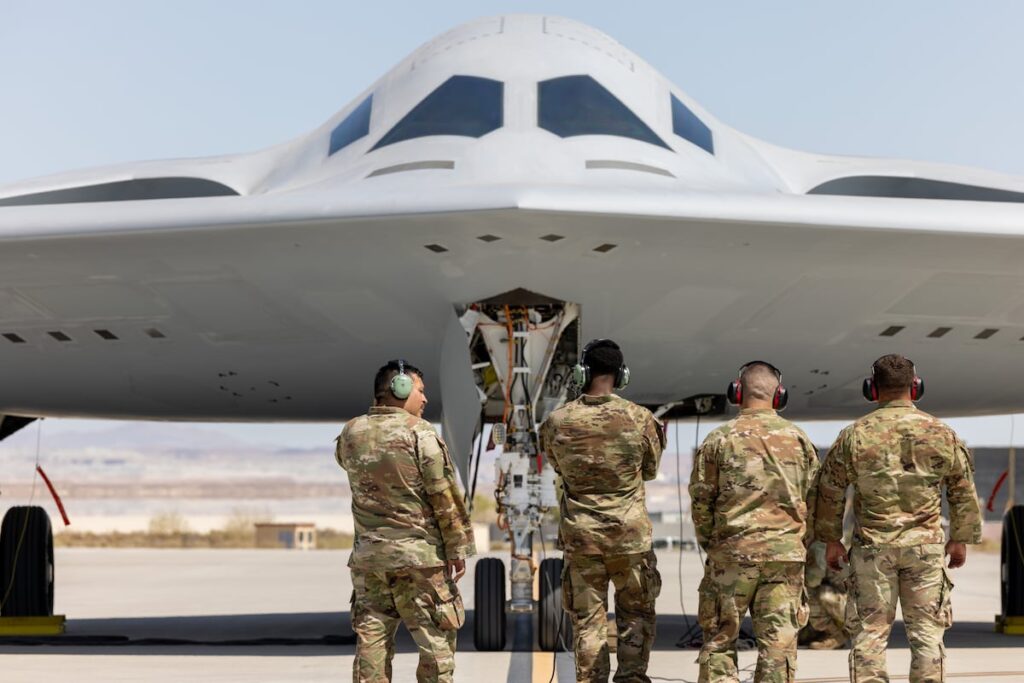
The recent passage of bills as part of the agreement that concluded the longest U.S. government shutdown in history has earmarked billions of dollars for significant Air Force and Navy programs. These funds are directed towards the construction of new aircraft carriers and submarines, essential facilities for stealth bombers and nuclear missiles, and crucial research and development to sustain a major airborne command and control initiative.
The Continuing Appropriations Act of 2026 has allocated nearly $200 million for Air Force research and development related to the E-7 Wedgetail program. This funding aims to ensure the program’s rapid prototyping efforts remain on schedule, facilitating its transition to production. An additional $200 million has been redirected from unobligated Air Force aircraft procurement funds to the E-7, bringing the total financial boost for the Wedgetail to almost $400 million.
Controversy Surrounding the E-7 Wedgetail
Despite the Pentagon’s initial plans to terminate the Boeing-manufactured E-7 program during the 2026 funding process, this financial commitment keeps the initiative alive. The Air Force had previously committed to acquiring a fleet of up to 26 E-7s to replace its aging E-3 Sentry Airborne Warning and Control System planes, awarding Boeing a $1.2 billion contract in 2024 to commence work.
Australia, Turkey, and South Korea already operate the E-7, but the U.S. Air Force sought additional features such as open mission system software and enhanced global positioning and satellite communication capabilities. However, skepticism about the E-7’s future utility and survivability was expressed by Defense Secretary Pete Hegseth during a June congressional hearing. Hegseth advocated for space-based intelligence, surveillance, and reconnaissance capabilities instead.
The Pentagon’s budget proposal released later that month suggested canceling the E-7 due to delays, cost overruns, and concerns about its vulnerability in contested environments. This decision faced opposition from lawmakers and over a dozen retired Air Force generals, who argued in an open letter that the Wedgetail is essential for future warfare, urging a reversal of the Pentagon’s stance.
Navy’s Shipbuilding and Air Force’s Stealth Bomber Projects
The legislation also significantly increases the Navy’s shipbuilding budget by over $1 billion. This includes an additional $510.4 million for the Virginia-class submarine program and $150 million for the carrier replacement initiative, aimed at replacing older Nimitz-class carriers with advanced Ford-class models.
Another accompanying bill, the Military Construction, Veterans Affairs, and Related Agencies Appropriations Act, provides nearly $600 million for Air Force projects related to the B-21 Raider, a nuclear-capable stealth bomber under construction by Northrop Grumman. This includes $378 million for B-21 facilities and flight simulators at Ellsworth Air Force Base in South Dakota and $127.6 million for similar facilities at Whiteman Air Force Base in Missouri.
Dyess Air Force Base in Texas is also set to receive nearly $91 million for its B-21 facilities. Rep. Jodey Arrington, R-Texas, chairman of the House Budget Committee, hailed this as “the largest investment in Dyess history,” more than tripling last year’s allocation. “These funds will directly support the B-21’s arrival and ensure Dyess remains the tip of the spear for America’s air arsenal,” Arrington stated.
Infrastructure Enhancements for Missile and Fighter Programs
Ellsworth will be the first base to receive operational B-21s in the coming years, with Whiteman and Dyess to follow. In September 2025, after the second test B-21’s inaugural flight, the Air Force announced plans for major construction projects at all three bases in fiscal 2026.
The bill also allocates $130 million for constructing a utility corridor at F.E. Warren Air Force Base in Wyoming, supporting the LGM-35A Sentinel program. This extensive Air Force project aims to replace the nation’s arsenal of over 400 Minuteman III intercontinental ballistic missiles, which are capable of carrying nuclear warheads. These missile sites, spread across the Great Plains, are interconnected by thousands of miles of utility corridors.
The Air Force, in collaboration with Northrop Grumman, plans to upgrade the outdated heavy copper cabling with modern fiber optic lines as part of this initiative. According to the Air Force Global Strike Command’s website, F.E. Warren will need to secure easements to install and maintain 910 miles of new utility corridors and additional utilities across 1,611 miles of existing corridors.
Eglin Air Force Base in Florida is set to receive $125 million for F-35A facilities, including $50 million for a two-bay F-35 test hangar, $52 million for a maintenance hangar, and $23 million for a squadron operations facility. The Air Force’s total construction spending amounts to approximately $4 billion.
“These investments underscore the strategic importance of maintaining and advancing U.S. military capabilities, ensuring readiness for future challenges,” said Stephen Losey, air warfare reporter for Defense News.
As the U.S. military continues to modernize and expand its capabilities, these financial allocations highlight the ongoing commitment to maintaining a robust defense infrastructure. The implications of these investments will likely be felt across multiple domains, ensuring the nation’s preparedness for emerging threats.







